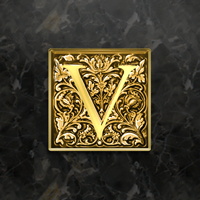Principles
See highlights and high-quality resources for advanced investigations.
Elements & Principles work together in art and design and they are the building blocks of an artwork's composition. Knowing and understanding them allows us to analyze and evaluate creative work from a theoretical perspective. The terms and/or subcategories vary from resource to resource. Here, you will learn a broad scope of information that includes additional resources for advanced investigation.
describe "WHAT"
the physical characteristics of art and design are.
(links to each page / new tab)
Line: Hatching+, Stippling, Blending+
Shape: Organic, Geometric, Open, ClosedValue: Spectrum Scale, Keys, Lighting+
Texture: Tactile, Implied, Rubbings+
Color: Science, Schemes, Psychology+
Space: Linear & Aerial Perspective, Grids+
Form: Volume
describe "HOW"
the elements of art and design work together.
(intrapage bookmark links below)
Balance: Symmetry, Asymmetry, Radial+
Proportion: Scale, Measurement+
Dominance: Emphasis, Hierarchy+
Harmony, Variety: Same, Different+
Movement: Rhythm, Repetiton, Patterns
Unity: Composition, Golden Ratio+
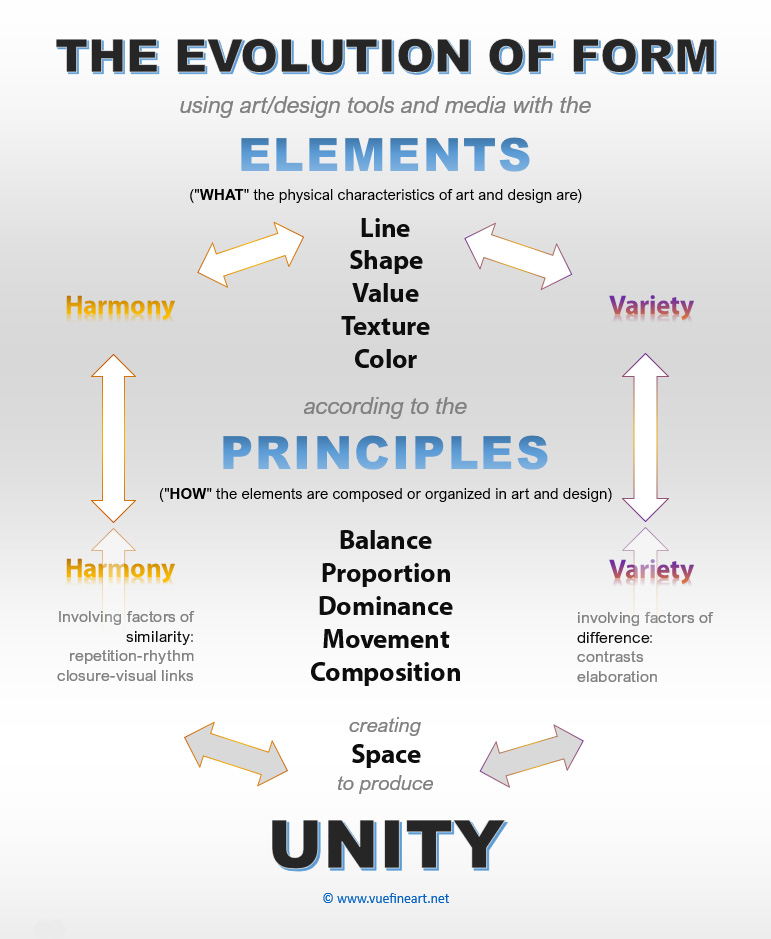
Principles of Design
Balance
Video : Balance - Art Vocab Definition (0:33) -Phil Hansen
Balance (Principle of Art and Design) is the even (though not necessarily equal) distribution of the design elements to create harmony within a composition. -Visual Communication Design
There are three types of balance in visual design:
Symmetrical, Asymmetrical, and Radial Balance.
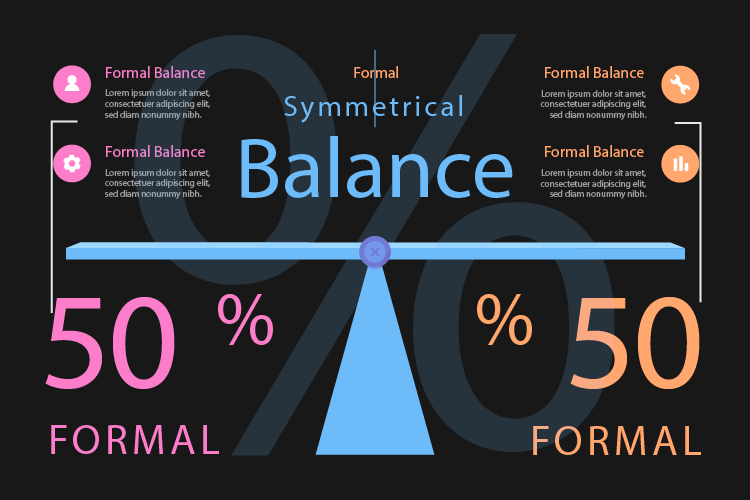
Symmetrical or Formal Balance: If the elements are of equal weight and value on either it is symmetrically balanced. Usually when one or more elements are mirrored on either side we refer to this as a stable or more formal composition. Symmetrical Balance adds a sense of order, rest, & calmness to a composition.
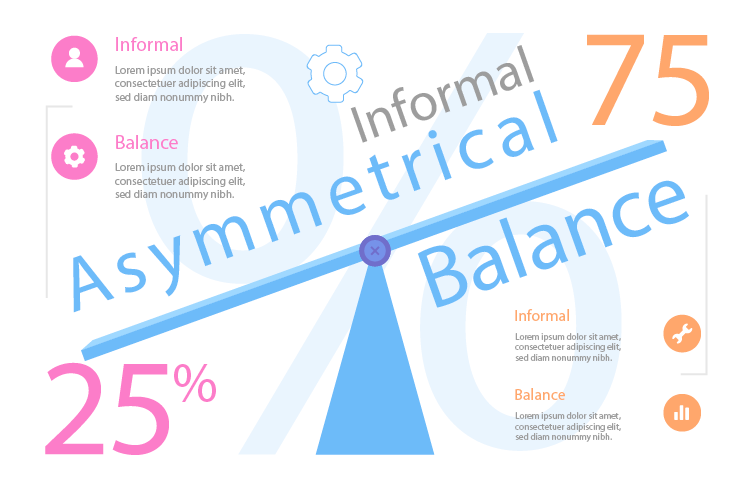
Asymmetrical or Informal Balance: When the imagery is not mirrored the composition is dynamic or informal. Asymmetrical balance adds a sense of tension, dynamics, and emphasis to a composition. The overall effect is a strong, dynamic and effective composition.
Radial Balance
Radial Balance is arranged around a central element.
The elements placed in a radial balance
seem to 'radiate' out/in from/to
a central point in a circular fashion.
Centripetal (adjective)
1.: proceeding or acting in a direction toward a center or axis -Merriam-Webster Dictionary
Centrifugal (adjective)
1. : proceeding or acting in a direction away from a center or axis
centrifugal acceleration of a body -Merriam-Webster Dictionary

Scale
& Proportion
Principles: Scale / Proportion │ Using the relative size of elements against each other can attract attention to a focal point. When elements are designed larger than life, scale is being used to show drama...-Wikipedia
Video Below: Measuring Methods For Artists (2:53) │ Artists often use measuring techniques to achieve more accurate, realistic effects. Measuring is used to calculate relative sizes and proportions and is useful for still lifes, landscapes and even figurative art. Today we use several measuring methods including: comparative, sight-size and triangulation." —CroquisCafe
Dominance
& Emphasis
Principles: Dominance / Emphasis │ Dominance is created by contrasting size, positioning, color, style, or shape. The focal point should dominate the design with scale and contrast without sacrificing the unity of the whole...-Wikipedia
Hierarchy; a good design contains elements that lead the reader through each element in order of its significance. The type and images should be expressed starting from most important to the least important...-Wikipedia
Video Below: How to Create Focal Points in Art │ (2:02) Learn 5 ways to create focal points in your artwork Composition. Art. Drawing and Painting. —The Virtual Instructor
Harmony
& Variety
Principle: Harmony (or Similarity) │ Planning a consistent and similar design is an important aspect of a designer's work to make their focal point visible. Too much similarity is boring but without similarity important elements will not exist and an image without contrast is uneventful, so the key is to find the balance between similarity and contrast...-Wikipedia
Principle: Variety (or Contrast)
the state of being strikingly different from something else
in juxtaposition or close association...-Wikipedia
Video Above: Variety - Art Vocab Definition │
(0:33) Phil Hansen
Movement
Principle: Movement │ is the path the viewer’s eye takes through the work of art, often to focal areas. Such movement can be directed along lines, edges, shape, and color within the work of art..-Getty (pdf)
Movement subcategories include: pattern, repetition and rythm below:
Pattern │ Many textures appear to repeat the same motif. When a motif is repeated over and over again in a surface, it results in a pattern...-Wikipedia
Repetition │ works with pattern to make the work of art seem active. The repetition of elements of design creates unity within the work of art...-Getty
Rhythm │ is created when one or more elements of design are used repeatedly to create a feeling of organized movement. Rhythm creates a mood like music or dancing. To keep rhythm exciting and active, variety is essential...-Getty
Video Below: Visual Movement - Art Vocab Definition │ (0:22) Phil Hansen
Golden Ratio
Principle: Golden Ratio │ When all elements are in agreement, a design is considered unified. No individual part is viewed as more important than the whole design. A good balance between unity and variety must be established to avoid a chaotic or a lifeless design...-Wikipedia
Video Below: Design Principles - Golden Ratio │ (20.31) VirtualAddiction
Composition
Principle: Composition │ In the visual arts, composition is the placement or arrangement of visual elements or 'ingredients' in a work of art, as distinct from the subject. It can also be thought of as the organization of the elements of art according to the principles of art...-Wikipedia
Video Below: Composition - Art Vocab Definition │ (0:24) Phil Hansen
Unity
Principle: Unity │ When all elements are in agreement, a design is considered unified. No individual part is viewed as more important than the whole design. A good balance between unity and variety must be established to avoid a chaotic or a lifeless design. - Wikipedia
Video Above: Unity - Art Vocab Definition - │ (0:19) Phil Hansen
Creative Commons Public Domain
0 1.0 Universal 0 1.0) License
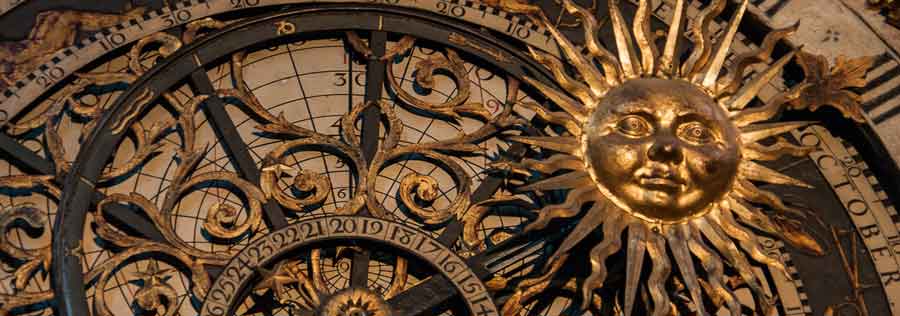
Resources
Below, is a small sample of
information links
coordinated with
video playlists.
Each link and video thumbnail takes you to the category on the Resource page.
Once there, activate the links.
Resources
Materials
